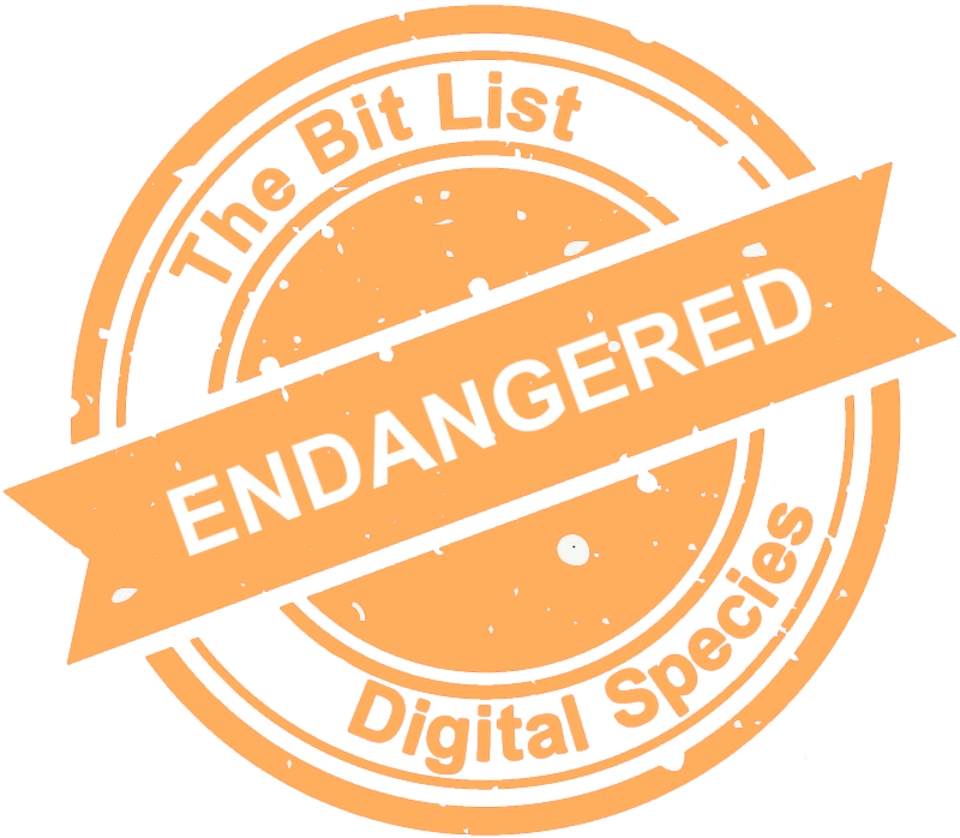Digital Radio Recordings
 |
||
|
Primary and/or original recordings of radio broadcasts generated live but often poorly stored thereafter, for example offline recordings on single LTO (Linear Tape Open) Tapes. |
||
|
Digital Species: Sound and Vision |
Trend in 2023:
|
Consensus Decision |
|
Added to List: 2017 |
Trend in 2024:
|
Previously: Endangered |
|
Imminence of Action Action is recommended within three years, detailed assessment within one year. |
Significance of Loss The loss of tools, data or services within this group would impact on people and sectors around the world. |
Effort to Preserve | Inevitability It would require a major effort to prevent or reduce losses in this group, possibly requiring the development of new preservation tools or techniques. |
|
Examples Broadcast archives include but are not limited to national, local, public, commercial radio. |
||
|
‘Critically Endangered’ in the Presence of Aggravating Conditions Lack of archival mandate; lack of capability of archive; lack of policy or capacity within broadcaster; small or unprofitable broadcaster; uncertainty over IPR or the presence of orphaned works; overzealous rights management protection; device or software dependence; dependence on proprietary or obsolete formats; lack or loss of documentation; little use or inaccessibility; storage (typically tapes) older than warranty; lack of media refreshment plan; lack of error or integrity checking process; single copies. |
||
|
‘Vulnerable’ in the Presence of Good Practice Archival responsibility accepted and acted upon; replication; refreshment of media; good documentation; active in digital preservation community; trusted repository; content re-used. |
||
|
2023 Review This entry was added in 2017 as a separate entry due to concern over recordings on LTO tapes. These provide between 15 and 30 years’ storage which may be less depending on usage and storage conditions. LTO1 and LTO2, released in 2000 and 2003 respectively, have largely reached the final phases of viability. Reader compatibility may be more problematic than media resilience, however. Drives supporting newer releases of the format are typically only compatible within two generations, and experience with the recently released LTO8 suggests that it is only backwardly compatible to one generation. For instance, one major national archive and library had decided to expedite migration away from LTO6, which is becoming obsolete more quickly than anticipated. Through time, the risks to collections that have not been refreshed or replicated from early LTO tapes expand. Thus, the overall trend is towards greater risk when collections are not migrated. Older formats, perhaps as recently as LTO6, extinction events should be anticipated within two to five years. The 2020 and 2021 Juries, as well as the 2022 Taskforce, agreed with the Endangered classification, noting no change to the trend (they agreed these risks remain on the same basis as before). The 2023 Council similarly agreed with the Endangered classification with the overall risks remaining on the same basis as before (‘No change’ to trend). The 2023 Bit List Council also recommended that the next major review for the Bit List consider creating a new ‘Broadcast’ species group where this entry may be better suited. |
||
|
2024 Interim Review These risks remain on the same basis as before, with no significant trend towards even greater or reduced risk (‘No change’ to trend). |
||
|
Additional Comments Depending on the legislative context, digital radio recordings may fall under published works if they are broadcast. Additionally, if the recordings are broadcast by a taxpayer-funded broadcaster, record-keeping guidelines may already exist to advise how long content should be kept, which would then inform a selective approach to caring and looking after them for as long as required. While broadcasters may keep their own programmes, they are often not comprehensively collected or archived by memory institutions as contributions to cultural heritage. Case Studies or Examples:
|
||









































































































































